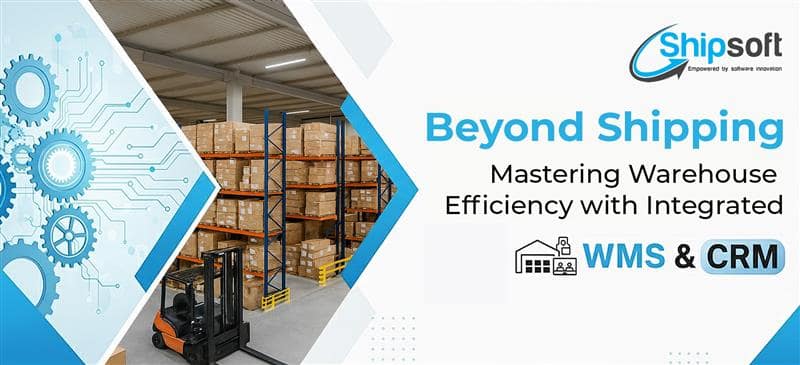
Why Efficiency Matters Now
Missed deadlines, rising costs, and customer frustration — these are no longer exceptions in logistics, they are everyday challenges. In today’s competitive supply chain, efficiency is not just an advantage; it’s survival.
The real question for logistics providers is: How do you go beyond shipping and truly master warehouse efficiency? The answer lies in integrated SaaS platforms that connect Warehouse Management Systems (WMS), Customer Relationship Management (CRM), and ERP solutions into one seamless ecosystem.
From Traditional Shipping to Smart Warehousing
Logistics is no longer just about moving goods from point A to point B. Customers now demand:
- Real-time shipment tracking
- Accurate inventory updates
- Faster delivery options
- Personalized communication
Meeting these expectations requires more than trucks and containers. It requires digital integration. By combining WMS with CRM and ERP tools, logistics companies eliminate silos, reduce errors, and keep customers engaged throughout the journey.
Why WMS is the Backbone of Efficiency
A Warehouse Management System (WMS) does more than track stock — it drives efficiency across operations:
- Real-time Inventory Accuracy – Never lose track of stock.
- Optimized Space Utilization – Maximize every square foot.
- Faster Order Fulfilment – Automate picking, packing, and dispatch.
- Lower Costs – Reduce wastage and labor inefficiencies.
When powered by SaaS, WMS becomes scalable, cloud-driven, and accessible anywhere — giving logistics providers complete visibility across multiple warehouses.
CRM: Putting the Customer at the Center
While WMS handles the goods, CRM (Customer Relationship Management) handles the people. In logistics, CRM goes beyond sales tracking. It ensures:
- Proactive communication during delays.
- Personalized services such as priority deliveries.
- Smarter forecasting by analyzing past customer behavior.
- Stronger relationships built on transparency.
Imagine this: A customer places an urgent order. The CRM flags it as high priority. The WMS automatically adjusts picking schedules. The TMS (Transport Management System) assigns the fastest delivery route. The customer gets real-time updates.
That’s customer-centric logistics in action.
ERP & Supply Chain SaaS: Connecting the Dots
One of the biggest hurdles in logistics is fragmented systems — finance, warehouse operations, and transport often run separately. An ERP (Enterprise Resource Planning) SaaS solution connects it all:
- WMS + CRM + TMS (Transport Management Systems)
- Freight forwarding & customs compliance
- Finance, procurement, and HR
With ERP integration, businesses gain a single source of truth, making decisions faster and smarter — from forecasting demand to negotiating supplier contracts.
The Future of Logistics: AI, IoT & SaaS Scalability
The next wave of logistics is already here:
- AI-driven demand forecasting for better inventory planning.
- IoT-enabled warehouses with real-time stock visibility.
- Robotic picking & automation to reduce manual errors.
- Predictive analytics that anticipate disruptions before they occur.
With SaaS platforms, logistics companies can adopt these innovations quickly, without heavy upfront investments.
Benefits at a Glance
By adopting an integrated Logistics SaaS ecosystem (WMS + CRM + ERP + TMS), businesses can achieve:
✅ End-to-end supply chain visibility
✅ Reduced operational costs
✅ Faster, more reliable deliveries
✅ Stronger customer satisfaction & loyalty
✅ Scalability for global growth
Conclusion: Beyond Shipping, Towards Value Creation
Efficiency in logistics is no longer just about moving goods; it’s about creating value, building trust, and delivering exceptional customer experiences.
Companies that embrace integrated SaaS platforms — combining WMS, CRM, ERP, and transport management — will not only stay competitive but set the standard for the future of logistics.
